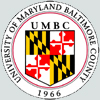| ||||||||||||||||||||||||||||||||||||||||||||||||||||||||||||||
Tips:  Range on the Protein: Protein ID Protein Position Domain Position: 
|
|---|
Weblogos are Copyright (c) 2002 Regents of the University of California
| DMDM_info@umbc.edu | 1000 Hilltop Circle, Baltimore, MD 21250 | Department of Biological Sciences | Phone: 410-455-2258 |




 Rab GTPase family 26 (Rab26). Rab26 subfamily. First identified in rat pancreatic acinar cells, Rab26 is believed to play a role in recruiting mature granules to the plasma membrane upon beta-adrenergic stimulation. Rab26 belongs to the Rab functional group III, which are considered key regulators of intracellular vesicle transport during exocytosis. GTPase activating proteins (GAPs) interact with GTP-bound Rab and accelerate the hydrolysis of GTP to GDP. Guanine nucleotide exchange factors (GEFs) interact with GDP-bound Rabs to promote the formation of the GTP-bound state. Rabs are further regulated by guanine nucleotide dissociation inhibitors (GDIs), which facilitate Rab recycling by masking C-terminal lipid binding and promoting cytosolic localization. Most Rab GTPases contain a lipid modification site at the C-terminus, with sequence motifs CC, CXC, or CCX. Lipid binding is essential for membrane attachment, a key feature of most Rab proteins.
Rab GTPase family 26 (Rab26). Rab26 subfamily. First identified in rat pancreatic acinar cells, Rab26 is believed to play a role in recruiting mature granules to the plasma membrane upon beta-adrenergic stimulation. Rab26 belongs to the Rab functional group III, which are considered key regulators of intracellular vesicle transport during exocytosis. GTPase activating proteins (GAPs) interact with GTP-bound Rab and accelerate the hydrolysis of GTP to GDP. Guanine nucleotide exchange factors (GEFs) interact with GDP-bound Rabs to promote the formation of the GTP-bound state. Rabs are further regulated by guanine nucleotide dissociation inhibitors (GDIs), which facilitate Rab recycling by masking C-terminal lipid binding and promoting cytosolic localization. Most Rab GTPases contain a lipid modification site at the C-terminus, with sequence motifs CC, CXC, or CCX. Lipid binding is essential for membrane attachment, a key feature of most Rab proteins. No pairwise interactions are available for this conserved domain.
No pairwise interactions are available for this conserved domain.













